Browse Primary Sources
Locate primary sources, including images, objects, media, and texts. Annotations by scholars contextualize sources.

One Voice SOMOS Live! A Concert for Disaster Relief
Several Caribbean public figures (Puerto Rican artists Jennifer López and Marc Anthony and baseball player Alex Rodríguez) served as ambassadors of the Greater Caribbean before the world, to raise funds to address the immediate needs of the 2017 disaster victims in Puerto Rico and many other parts of the regions around th
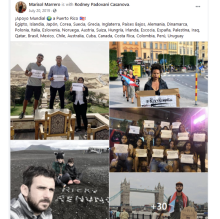
Solidarity Expressions from the Puerto Rican Diaspora
An event in Puerto Rico that captured world attention and motivated the interest of many Puerto Ricans in the diaspora to participate was the Summer of 2019 movement. In this event, at least a third of the population of Puerto Rico took to the streets to demand political and economic change.

OECS Treaty Publication Fragments
The OECS published in 1988 a booklet explaining the treaty that founded it (OECS 1988). A fragment is included in the photos here. This piece of the document focuses on explaining the integration provisions of the treaty, including the common market.
Transcript of the Treaty of Basseterre of 1981
To capture the diplomatic side of Caribbean economic history from the point of view of the governments, official documents describing economic policies, joint strategies, and related decision-making processes in the Caribbean region could be pursued.
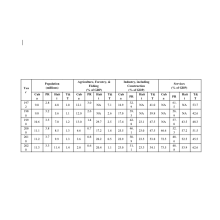
Popular World Development Indicators for Four Caribbean Countries
Raw numerical data may be pursued to track historical behavior through socioeconomic and demographic indicators. This data might be the basis to identify and understand socioeconomic challenges and potential solutions that should be addressed through economic diplomacy.

Harvard Physics Department asserts that investigations threaten national security, 1950
This document is the response of the Harvard University Physics Department to a proposed Congressional amendment in 1950 requiring that the FBI investigate scientists’ “loyalty” before they could receive government contracts. As the Harvard scientists write, heavy-handed attempts to root out the very rare disloyal applicant would be highly damaging overall to the morale of researchers.

National Academy of Sciences objects to political persecution of Condon, 1948
This document from 1948 expresses concern by members of the National Academy of Sciences (NAS) over the political persecution of Edward Condon, a physicist and director of the Bureau of Standards. Dating back to the 1860s, the NAS is a professional association tasked with giving scientific advice to the government.
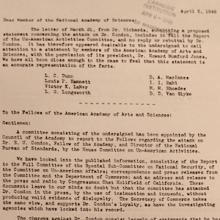
AAAS Defends Edward Condon from HUAC, 1948
This document from 1948 circulates to members of the American Academy of Arts and Sciences (AAAS) the organization’s position on the political persecution of Edward Condon, a physicist and director of the Bureau of Standards. Condon was a moderate internationalist who had a then-mainstream view that atomic bombs were too dangerous for any one country to control.
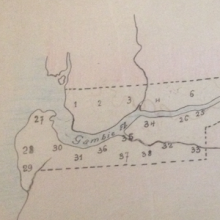
Map and Population Table for British Gambia, 1915-1918
Many people in West Africa fled across colonial boundaries to avoid military conscription in the late 19th and early 20th century. For example, during World War I, tens of thousands of people left the French colony of Senegal for neighboring British Gambia and Portuguese Guinea-Bissau.

British Police Station, Rasah, Malaysia
Many of the earliest British buildings in the Malay Peninsular were inspired by contemporary Malay structures. Most of these buildings do not exist anymore because they were built to serve temporary functions and were eventually replaced by permanent structures once masonry became available.
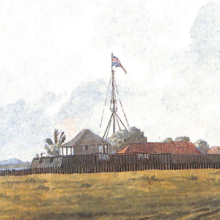
Wooden Stockade on Penang Island, 18th century
This stockade was painted by Captain Elisha Trapaud in 1787 and the painting is preserved in the India Office Library in London. Construction of the fort started in August 1786 as soon as Francis Light had taken possession of Penang Island (part of present day Malaysia) away from the Kedah Sultanate.
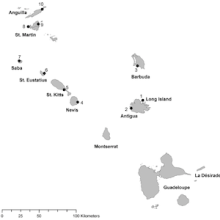
Tracing Canoe Pathways in the Lesser Antilles, 2000 BE - 400 BC
These maps show two constructed least cost pathways between Flinty Bay on Long Island just off the coast of Antigua (the right end of the line) and Jolly Beach on Antigua (the left end of the line). Flinty Bay served as a major source of flint for the Archaic Age (2000 - 400 BC) communities in the northern Lesser Antilles, the islands shown on the map.
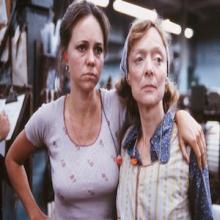
Norma Rae: Depicting Women's Labor History through Film
In this still shot from the movie Norma Rae, two pretty and petite white actors represent southern mill hands. Norma, portrayed by the famous actress Sally Field, stands with her mother (Barbara Baxley).

Puerto Rican Needleworkers in a Factory, San Juan, Puerto Rico, 1942
This government photograph provides an important contrast to the popular culture images of poor southern whites. During the 1940s and 1950s, U.S. government agencies hired photographers to travel the main island of Puerto Rico to capture the conditions of working people. This photo was taken at a “good factory” subsidized by the U.S. government to serve mainland manufacturers.
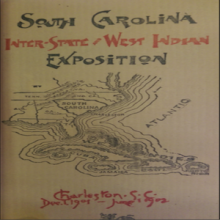
Brochure for the South Carolina Inter-State and West Indian Exposition / Charleston Exposition, 1901-1902
This is the cover for a pamphlet to promote the Charleston Exposition and recruit exhibitors and attendees from along the entire U.S. Atlantic, which ran from New England to Florida to Cuba and Puerto Rico. It is an effective visual representation of how cotton growers and textile and apparel producers envisioned the U.S.
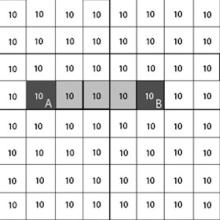
Least Cost Pathway Analysis Showing Movement Across a Landscape
These side by side charts show the basics of how least cost pathway analysis works in action. A geographic surface, landscape or seascape, is broken into standard size squares (or cells). These cells are then given a value based on an underlying factor in the geographic area, such as the slope of a hill calculated into a cost to climb up it, or the force and direction of a sea current.
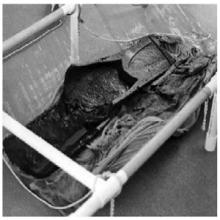
Remains of the Stargate Canoe
This image showcases one of the few remains of a canoe found in the Caribbean. The ‘Stargate’ canoe, found in a blue hole—a large marine cavern--on the island of South San Andros in the Bahamas, represents only the tip of the canoe. The image above shows the prow or stern of a canoe, similar to those found in Venezuela in the Upper Orinoco River basin.

Britain pressures U.S. to revoke citizenship of Indian activist
The US press often carried news of diplomatic issues in its headlines. This included references to matters of citizenship. In the early twentieth century, national and local newspapers in the United States inquired whether Asian immigrants were White and therefore eligible to naturalize as US citizens. The Black press also raised similar questions.

U.S. targets Indian activist, Taraknath Das
During World War I, U.S. and British officials expanded a transimperial surveillance apparatus designed to police enemy aliens and foreign threats. U.S.
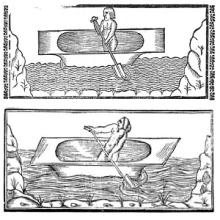
2 Prints of a Sole Amerindian in a Canoe
These images of a man in a canoe come from the work of the Spanish official, historian, and botanist Gonzalo Fernandez de Oviedo (1478-1557), who created many images of Amerindians while he was in the Caribbean during the 1520s.